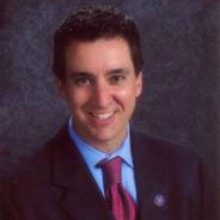
It comes as no surprise Evan Glazer is excited about the future: He gets a glimpse of it every day at the Thomas Jefferson High School for Science and Technology, where he is principal. But Glazer has always been a futurist. This year, he shared some thoughts with WashingtonExec’s STEM Symposium attendees. “I love to dream about the future and about what kind of potential is there,” he said.
The Future Is Now: A Quick Look Back
They may not have crystal balls, but futurists have accurately predicted many of the world’s technologies long before their invention.
“’2001: A Space Odyssey’ came out in the late 1960s,” he told the crowd of K-12 students and their parents. “HAL 9000 is the artificial intelligence-based computer… it happened a little later, but now on your phones people use Siri and Alexa from Amazon; you have devices at home that talk to you and provide you with information.”
“HAL ended up being a little more than an information provider and became—well, watch the movie,” he said. “I’m not going to tell you what happened. It’s a classic.”
Nikola Tesla predicted Wi-Fi and mobile phones in 1909; Popular Mechanics predicted in the 1950s everyone would have helicopters at home that people could just pull out of the driveway. That last one may not be true (yet), but other technologies, like the Roomba (predicted in 1899) and video phones (like those in the 1970s show “The Jetsons”), are part of many of our everyday lives.
“I think in watching a fair amount of science fiction in life, you start believing that science fiction is science yet to be discovered,” Glazer said. “Some of it is far-fetched, but some of it can become true based on advancements of computing power and the advancements in thinking.”
What Drives the Future
There are three other things Glazer thinks will drive the innovations and jobs of the future.
“The first are the problems facing the world today; how can STEM be applied to solve them,” he said. “The second is individualization and customization, because consumers of advancements of STEM are attracted to how innovation can improve their lives, or the lives of people they care about.”
Current research practices are the third driver.
“The research of today drives innovation,” Glazer said, particularly when it comes to the marketplace. Today’s emerging technologies and trends already give us a glimpse into future jobs. For example, biomedical engineering will be in very high demand because of an aging population.
“If you are graduating [from]high school and want a job that has guaranteed job security, biomedical engineering is certainly one possible field,” he said.
Careers of the Future: The People’s Choice
Glazer proposed various novel careers to the crowd, from telepathic engineers to nanorobotics medicine and continuous cognitive evaluator. At the end of his talk, Glazer put the power in the hands of the people–the kids and their parents and teachers who are the future. In a March Madness-style showdown, the audience voted and argued for its final four. Cognition and memory enhancer, genetic engineer, and hardware security specialist all ultimately lost out to air-quality neutralizer.
“I think that a lot of people are worried about the environment and that our air is not clean,” said the young woman who made the case. “People who create clean air will be very important because they will help people.”
If the students at WashingtonExec’s STEM Symposium are anything to go by, Glazer’s positive outlook for the future is well-justified. We will have a future of good.

